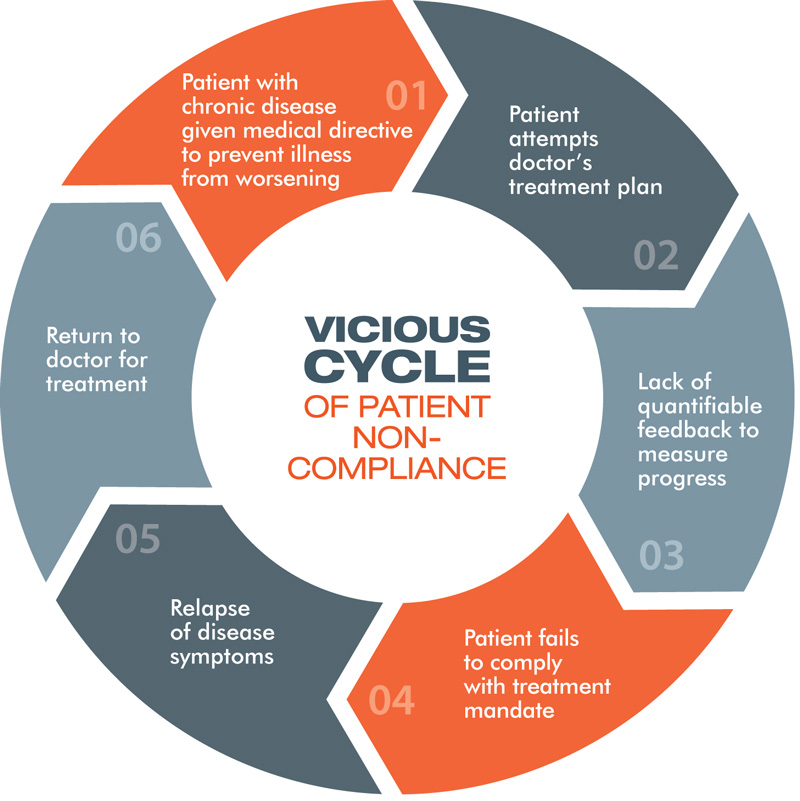The statistics surrounding chronic illness in the U.S. are staggering. Heart disease, stroke, and diabetes are three of the most widespread and costly health problems facing our country.
- Cardiovascular disease is the leading global cause of death, accounting for 17.3 million deaths per year.[1]
- One of out every three deaths is attributed to heart disease.[2]
- Cardiovascular disease alone costs more than $1 billion every single day. [3]
- The total estimated cost of diagnosed diabetes in 2012 was $245 billion, including $176 billion in direct medical costs and $69 billion in decreased productivity.[4]
- 86 percent of all health care spending in 2010 was for people with one or more chronic medical conditions.[5]
Vicious Cycle
Most chronic illnesses are preventable with a combination of lifestyle changes such as diet, stress reduction and increased physical activity. Yet it’s no secret we don’t do the things we should to prevent these diseases. And once we have a disease, we don’t manage it the way we should to keep the disease from progressing. Unfortunately, too many chronic conditions go untreated, creating an avoidable drain on an overburdened healthcare system.
Patient compliance is low because people don’t have the appropriate feedback to let them know if they are doing the right things at home on their own. What is needed is a comprehensive tool that gives patients tangible, real time information about whether their condition is improving or getting worse.

Take heart disease, for example. Let’s say you have a heart attack. You survive the heart attack and are sent home with a list of meds to take, told to start walking, avoid stress, improve your diet and to follow up with your cardiologist. You do your best to follow your doctor’s orders for about two or three weeks. You even start walking even though you weren’t an active person before your heart attack. However, you don’t really notice any difference in your well-being, so you gradually revert back to your old lifestyle habits. You are basically discouraged from taking care of yourself because you don’t have the right tools to guide you. This scenario is characteristic of the problem that drives patient non-compliance.
Yet, studies have shown that people are willing to self-manage if they have the right tools that are easy to use. So what exactly is missing? What does healthcare need to help chronically ill patients get off the slippery slope of noncompliance and worsening symptoms?
What we need is an easy-to-use tool that gives people clinical-grade feedback about their condition, and instructions on what to do next.
The Right Information in the Right Hands at the Right Time
What is desperately needed in disease management is the ability to take medically relevant, clinical-grade data and provide real time feedback to patients that includes a benchmark of their condition and information about next steps. In fact, a national survey of 1,000 respondents found that nearly 9 out of 10 consumers (88 percent) believe that working in partnership with their healthcare professional will help improve their overall health. And 78 percent of respondents would be more inclined to use a personal monitoring device if it were clinically accurate and easy to use.[6]
With the right feedback at the right time, patients can self-manage after the diagnosis of chronic illness.
Innovations to Close the Gap
Biotricity is a healthcare tech company focused on bringing medical grade technology into the consumer world. Our goal is to improve the user experience, while simultaneously maintaining the quality and reliability of the data. It’s a complicated, daunting task. We are innovating and creating new technologies within the remote patient monitoring segment to close the gap in chronic illness management and provide health practitioners and patients tools to aid in prevention, diagnosis and treatment.
[1] http://newsroom.heart.org/news/new-statistical-update-looks-at-worldwide-heart-stroke-health
[2] http://newsroom.heart.org/news/new-statistical-update-looks-at-worldwide-heart-stroke-health
[3] http://www.cdcfoundation.org/pr/2015/heart-disease-and-stroke-cost-america-nearly-1-billion-day-medical-costs-lost-productivity






